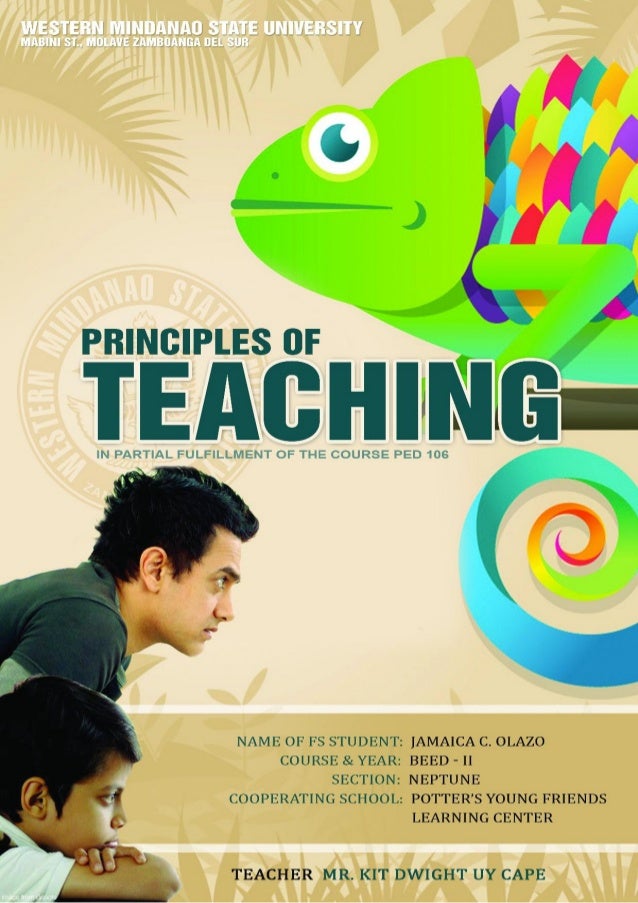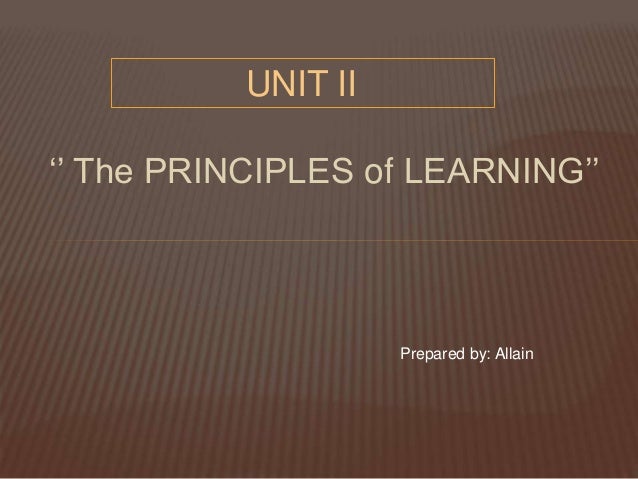12 Principles of Language Learning and Teaching. Native Language Effect: A learner’s native language creates both facilitating and interfering effects on learning. Communicative Competence: Fluency and use are just as important as accuracy and usage. Instruction must aim at organizational, pragmatic and strategic competence as well as. Interpersonal relationships and communication are critical to both the teaching-learning process and the social-emotional development of students. Emotional well-being influences educational performance, learning and development. What are the 7 main principles of teaching? There are seven principles of teaching that aim to improve standards, teaching and learning. Think of them as your seven commandments, they’re relevant in every learning situation. Teaching Principle one: Encourage contact between students and faculty. The Principles of Teaching 1 (TEAC21) Includes classroom climate, which has to do with the emotional tone and quantity of human relationships in the classroom. The physical features in the classroom must be located in areas where the contents could be viewed well and be made available for use.
 Ingram's Class Website. Students & Parents, Please use this website as a resource during this school year. I will be posting announcements, review materials, and other important class information. Feel free to contact me at any time. Ingram's Class Webpage!! Hi - Thank you for taking the time to visit our website. Be sure to check out all the different pages to learn more about our class. If there is anything you would like to see in addition to what I have on these pages, please let me know. Thanks again and enjoy browsing!
Ingram's Class Website. Students & Parents, Please use this website as a resource during this school year. I will be posting announcements, review materials, and other important class information. Feel free to contact me at any time. Ingram's Class Webpage!! Hi - Thank you for taking the time to visit our website. Be sure to check out all the different pages to learn more about our class. If there is anything you would like to see in addition to what I have on these pages, please let me know. Thanks again and enjoy browsing!
20th December 2017
Blog post bought to you by the UK’s number 1 education recruitment agency, Engage Education.
What are the 7 main principles of teaching?


There are seven principles of teaching that aim to improve standards, teaching and learning. Think of them as your seven commandments, they’re relevant in every learning situation.
Teaching Principle one: Encourage contact between students and faculty
Now it might seem obvious but building relationships and rapport with students is important, it’s one of the main factors in ensuring students succeed. There are many ways to open up the communication channels and build relationships between students and yourself, including learning your students’ names, personalising feedback on students work, sharing personal experiences (within reason!) and talking to your students on a personal level.
Teaching Principle two: Develop reciprocity and cooperation among students
When you encourage team collaboration and learning, learning is enhanced. Group work improves thinking, collaboration skills as well as social skills. Ways to introduce this into your classroom are cooperative learning groups, encouraging students with different socioeconomic backgrounds to participate in classes and introduce the idea of peer tutoring every now and again.
Teaching Principle three: Encourage active learning
It’s quite widely believed that students can only learn so much when they sit in a class and listen to a teacher, students need to make learning a part of their life. Simple ways to introduce active learning in your classroom could be asking students to present their work to the class, using ‘what-if’ situations to make students think about something different and giving students problem-solving tasks to complete.
Teaching Principle four: Give prompt feedback
Principles Of Teaching 1 Syllabus Philippines
The best time to summarise lessons and give feedback on work is when a subject or lesson is still fresh in your students’ minds. Feedback enhances learning as it helps your students identify what they successfully learned, and what they need to look at again. Great ways to help students reflect and learn on lessons is to follow up lessons with a summary of what should have been learned, Q&A style sessions and returning grades/marking within one week.
Principles Of Teaching 1 Course Syllabus
Teaching Principle five: Emphasise time on task
As we all know, we’re always rushed for time. Lessons range from 40-55 minutes, which means you need to introduce a subject, explore it, set some work around it and summarize it in a short amount of time. Learning should be efficient. Simple ways to ensure tasks are completed efficiently are having realistic expectations, teaching time management skills and helping students set their own goals and timelines for learning and submitting work.
Teaching Principle six: Communicate high expectations
Students with little motivation, children unwilling to try and children that exceed all need to be set high expectations. Ways to set high standards are encouraging students to work hard in class, giving positive reinforcement throughout your lessons and working one on one with students that might be struggling to learn something. Encouraging students to focus on doing their best, instead of worrying about grades is a really important way to boost confidence and ensure high standards are set, too.
Teaching Principle seven: Respect diverse talents and ways of learning
It’s commonly understood that everyone has different learning styles, no two people learn something the same way. The best practice to ensure every student is covered in your lessons is to offer a range of activities that cover and complement learning styles. Encouraging students to speak up when they don’t understand is a good way to ensure no students are left behind.
7 Principles Of Effective Teaching

These principles not only help you be the best teacher you can be not only for yourself but for your students.
Don’t be a stranger

Principles Of Teaching 1 Book
When you subscribe for updates from The Reading Corner, you’ll never miss a thing. We will send you relevant industry news, free resources to help you in your role, competitions, prizes, and more! You can unsubscribe at any time (although we can’t imagine why you’d want to!)
